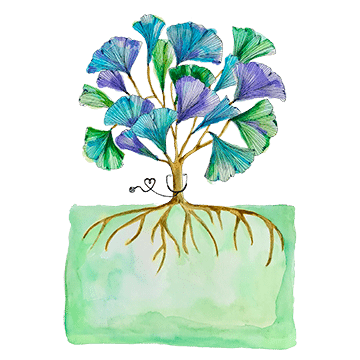
Natural Medicine Approaches to Candidiasis
Candida albicans is a type of fungus living in harmony with millions of other microorganisms that are part of our body’s normal gut flora. However, it can get out of control, resulting in a condition known as candidiasis, or candida overgrowth. When that happens, it can trigger a number of seemingly unrelated health issues, from athlete’s foot to yeast infections. Candidiasis typically affects women more than men and often is first noticed as a vaginal yeast infection.
Many people believe candida lives only in the intestines or in the vaginal area. In actuality, candida can live in every tissue in the body. Overgrowth often starts in the intestines, disrupting the healthy balance of gut-friendly bacteria and fungi. The candida spores spread through the digestive tract until they reach the throat and then the lungs. From the lungs, spores enter the alveolar sacs where blood is exposed to oxygen. From here, the bloodstream carries candida throughout the body. The extent of infection by this opportunistic fungus – and what systems it infects – are a complex mix of factors including age, lifestyle, diet, pre-existing conditions, among others.
Typically, a combination of factors trigger an overgrowth of candida; sometimes, however, it only takes a single element to incite an infection. Some of these factors include:
- Taking antibiotics
- A weakened immune system, either from a health condition or from taking immunosuppressive medications like steroids or chemotherapy
- Taking hormonal contraceptives, especially high-dose estrogen birth control pills
- Eating a diet high in refined carbs or sugar
- Excessive alcohol consumption
- High levels of stress
Depending on the extent of the overpopulation of the fungus and the systems affected, candidiasis can bring on a variety of symptoms, including:
- A white, cottage cheese-like coating on your tongue, inner cheeks, throat, or the roof of your mouth can all be a sign of candida overgrowth in the mouth, called oral thrush. The same type of substance in vaginal discharge can indicate a vaginal yeast infection.
- Frequent urinary tract infections can be another sign of candida overgrowth.
- Fungus can manifest in the toe nails, under or within skin folds, and over-populate other bodily symptoms resulting in surface symptoms that do not resolve.
A holistic physician can diagnose candidiasis with a simple test. Because yeast is a morphogenic organism – it changes shape throughout its lifecycle – treatment requires adjustments. Your health practitioner will likely use different herbs and supplements at different points in your treatment plan.
References
NUNM.com “Healing Candida Overgrowth Naturally.” Accessed 9 May 2020
Hudson T. Women’s Encyclopedia of Natural Medicine. New York, NY: McGraw Hill; 2008.
Miles MR, Olsen L., Rogers A. Recurrent vaginal candidiasis. Importance of an intestinal reservoir. JAMA. 1977; 238 (17): 1836-37.
Vaginal Yeast Infections: Symptoms, Causes, Risk Factors, Care, Treatments. WebMD.
Pizzorna, J. & Murray, M. (2012) Textbook of Natural Medicine.

